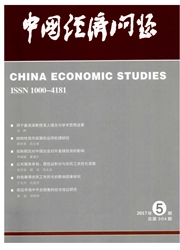

 中文摘要:
中文摘要:
现有国际投资理论主要是研究发达国家企业的对外投资行为,认为企业对外直接投资必须具备一定的垄断优势,反而低估了发展中国家企业的对外投资能力。本文在理论建模中放弃了要素密集度同质化的假设,将对外直接投资分为水平型和垂直型,证明了垂直型对外投资的生产率门槛要低于水平型对外直接投资,发展中国家企业有更多机会从事垂直型对外直接投资。进一步采用中国企业微观层面数据的实证检验后发现,目前中国企业对外投资实际上偏重成泰导向,对外投资并不像出口一样存在着“生产率悖论”,其生产率要显著高于无对外投资企业。同时,实证检验还进一步证实了理论模型中的假说,即垂直型比水平型对外投资有着更低的生产率门槛,这为我国政府制定相关政策推动企业集群式“走出去”提供了理论依据。
 英文摘要:
英文摘要:
The existing international investment theories mainly focus on the outward investment behavior from developed country, which emphasize certain firm-specific monopoly advantage; thereby they underestimate the capability of outward investment from developing country. This paper rejected the "homogenous factor intensity" hypothesis in the model, divided the types into horizontal and vertical outward investment and tested whetherif productivity of vertical outward investment is much lower than horizontal outward investment. Furthermore the paper made an empirical researchusing the Chinese firm level data to prove that China's outward investments actually are cost driven. The productivity paradox doesn't hold for outward investment, which means the productivity of investment firms is much higher than non-investment firms. It also concluded that the vertical outward investment has lower entry barrier than horizontal, which gave some policy implication for encouraging china's firms to go global.
 同期刊论文项目
同期刊论文项目
 同项目期刊论文
同项目期刊论文
 期刊信息
期刊信息
